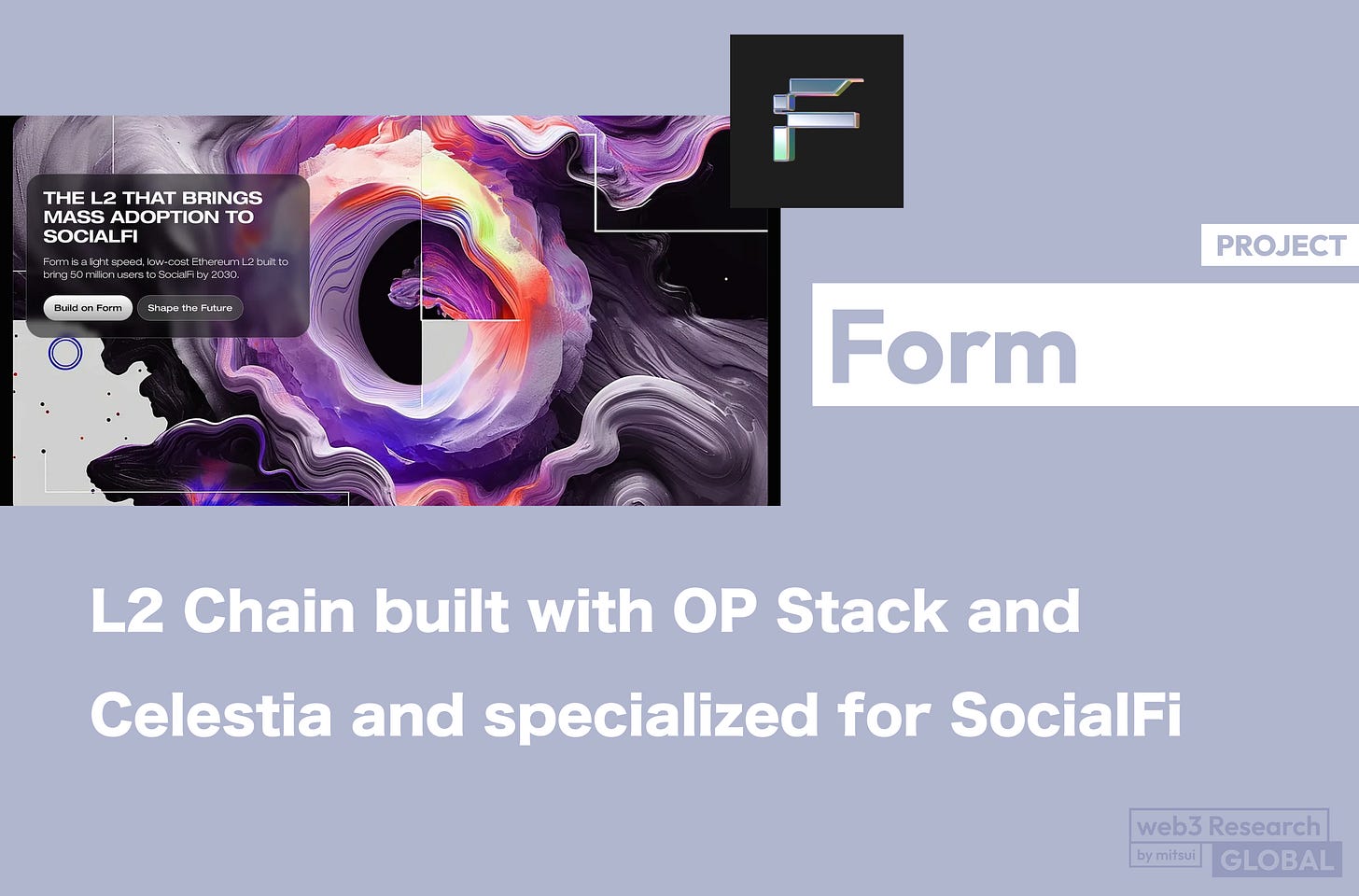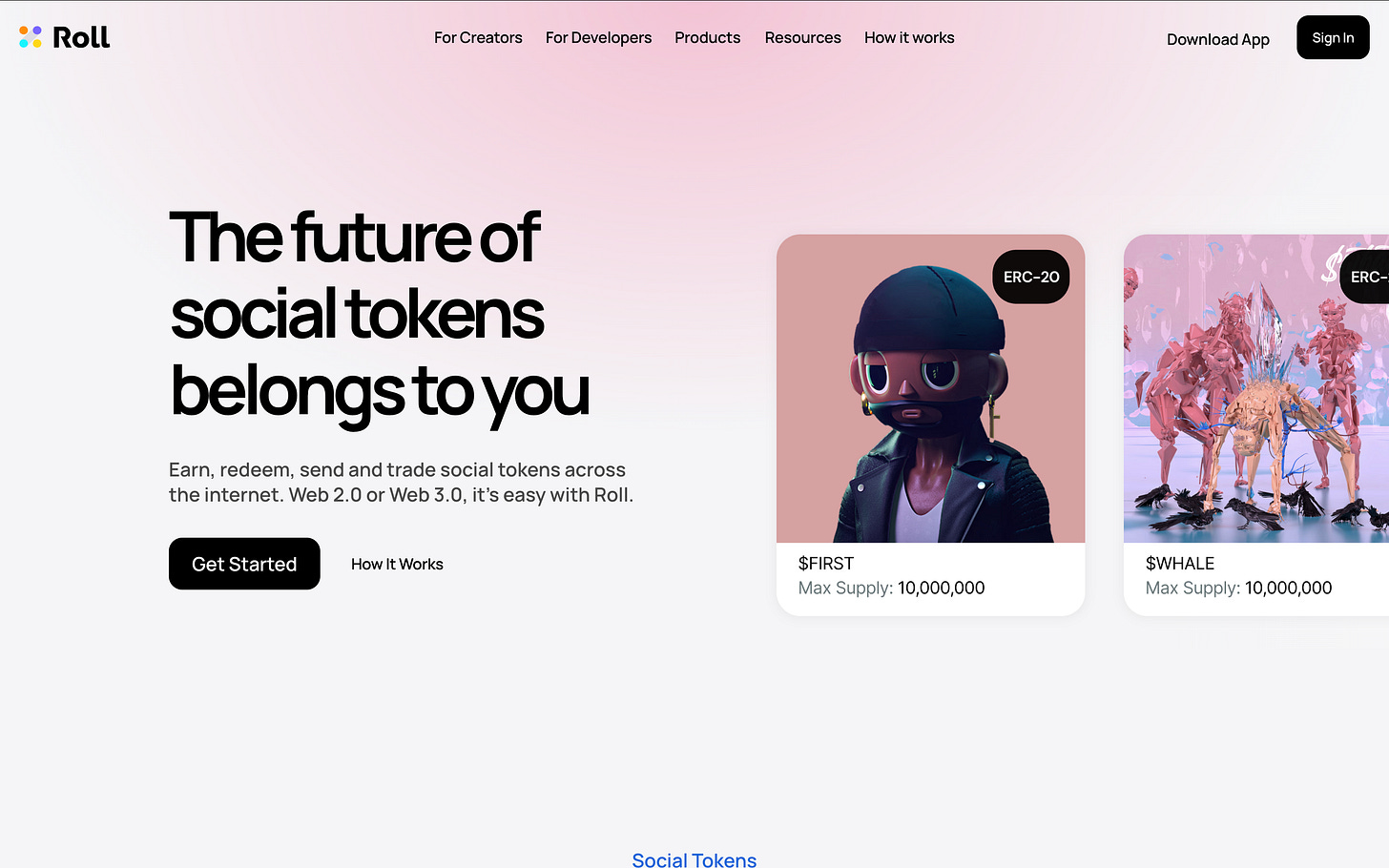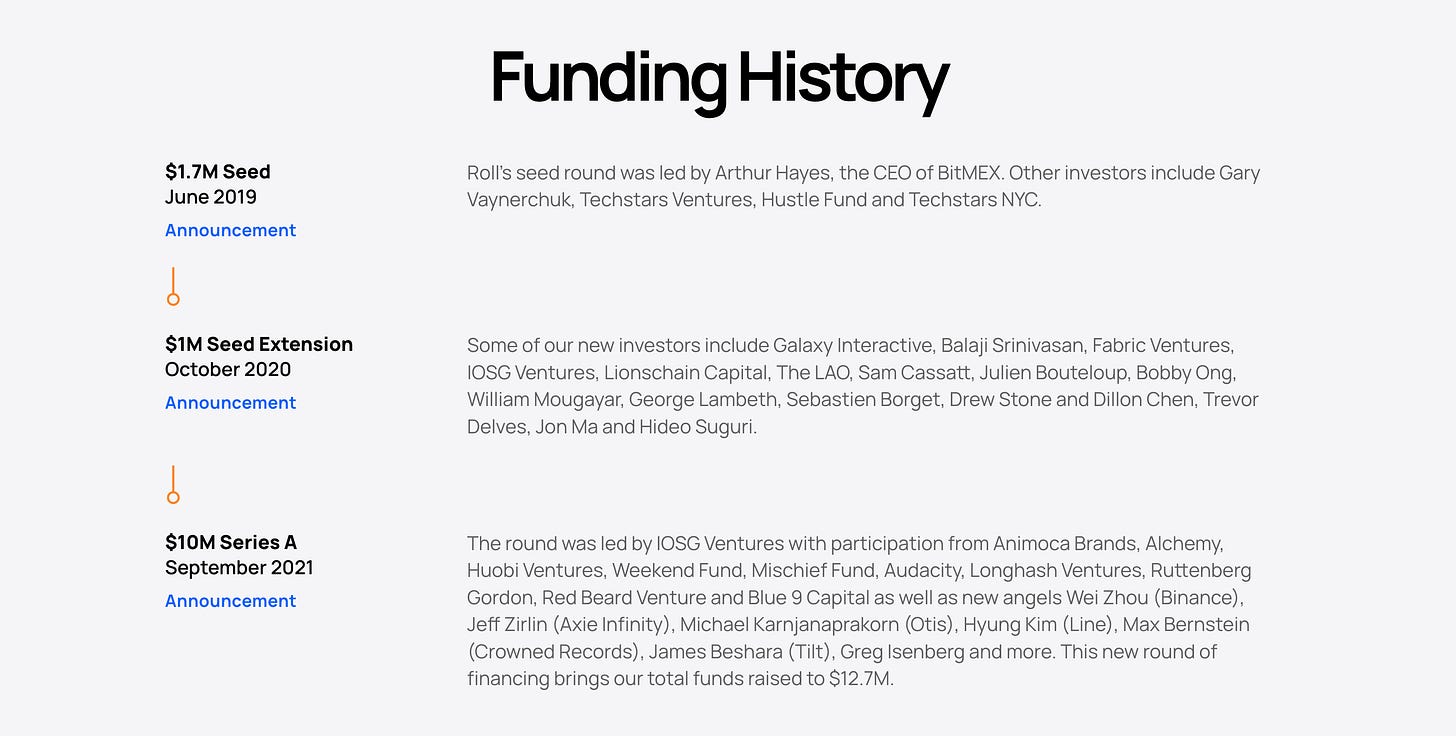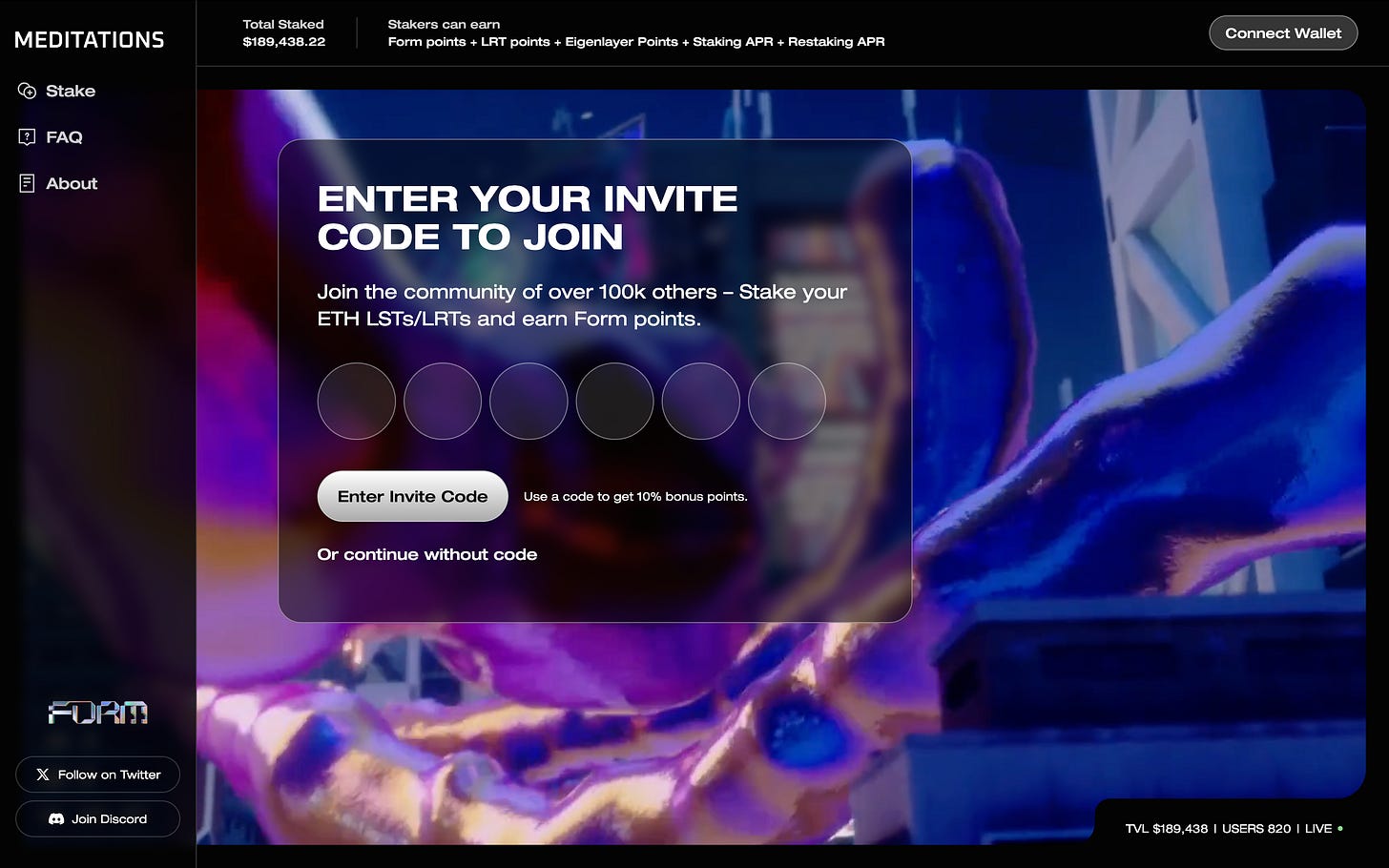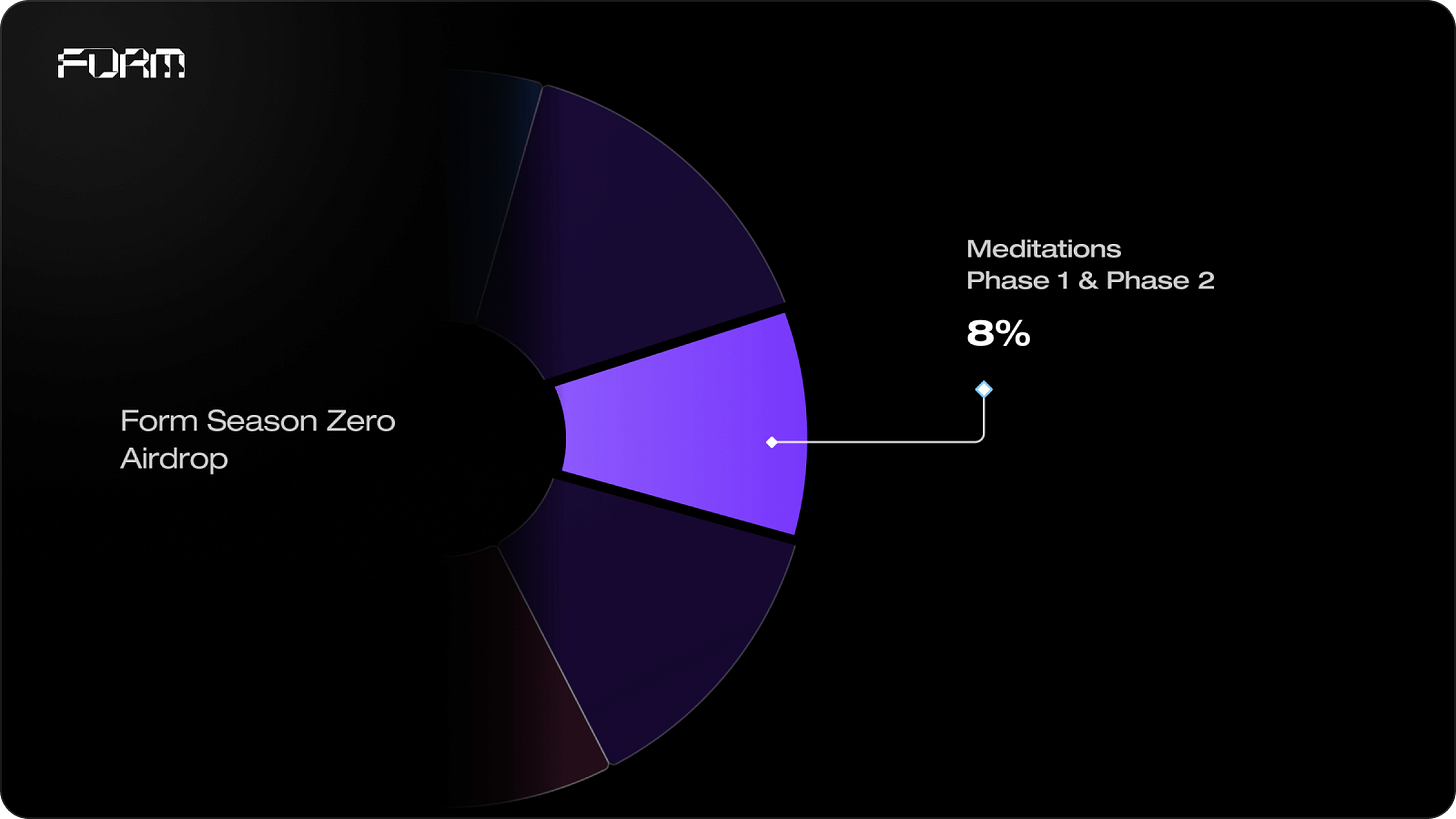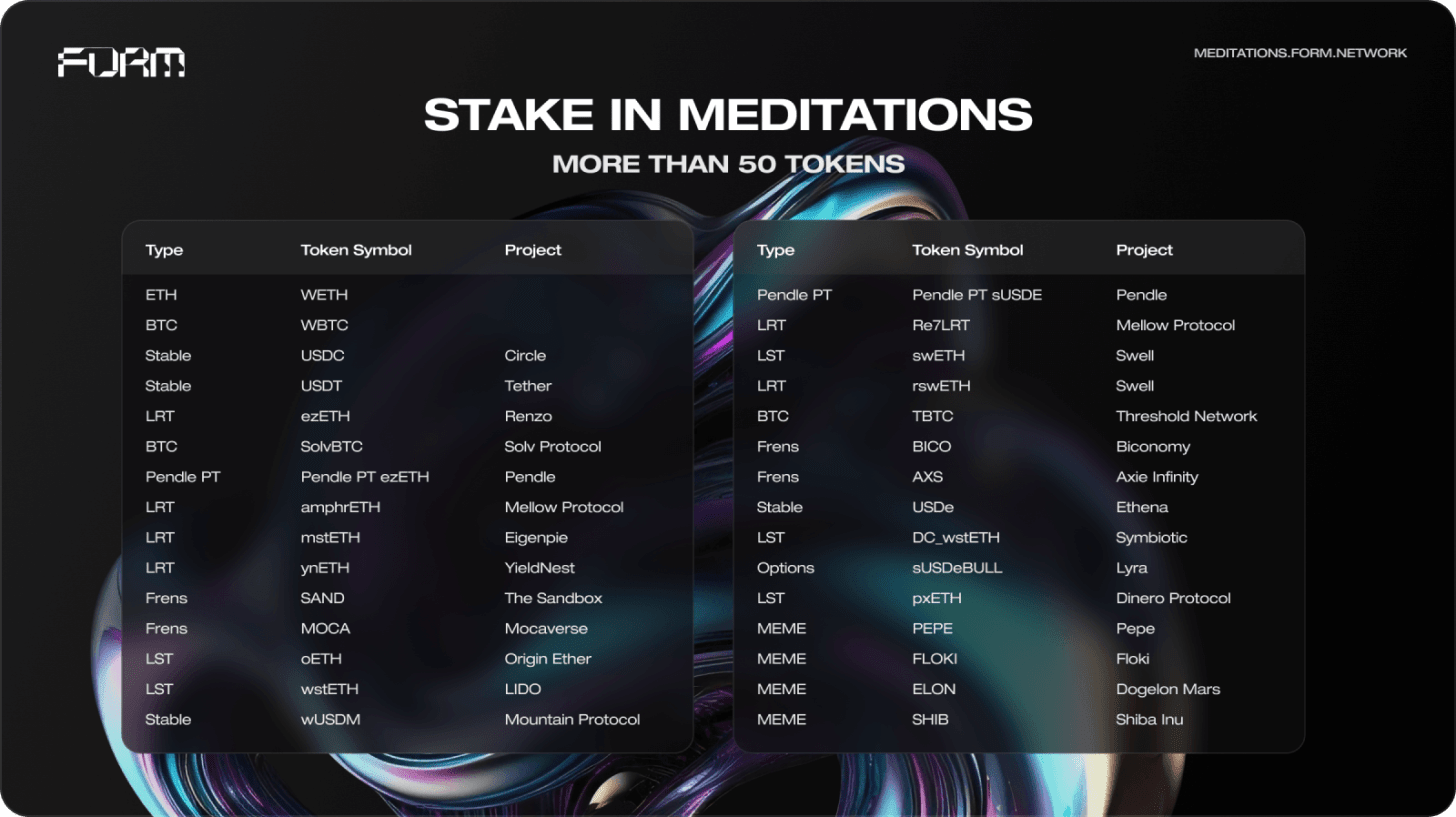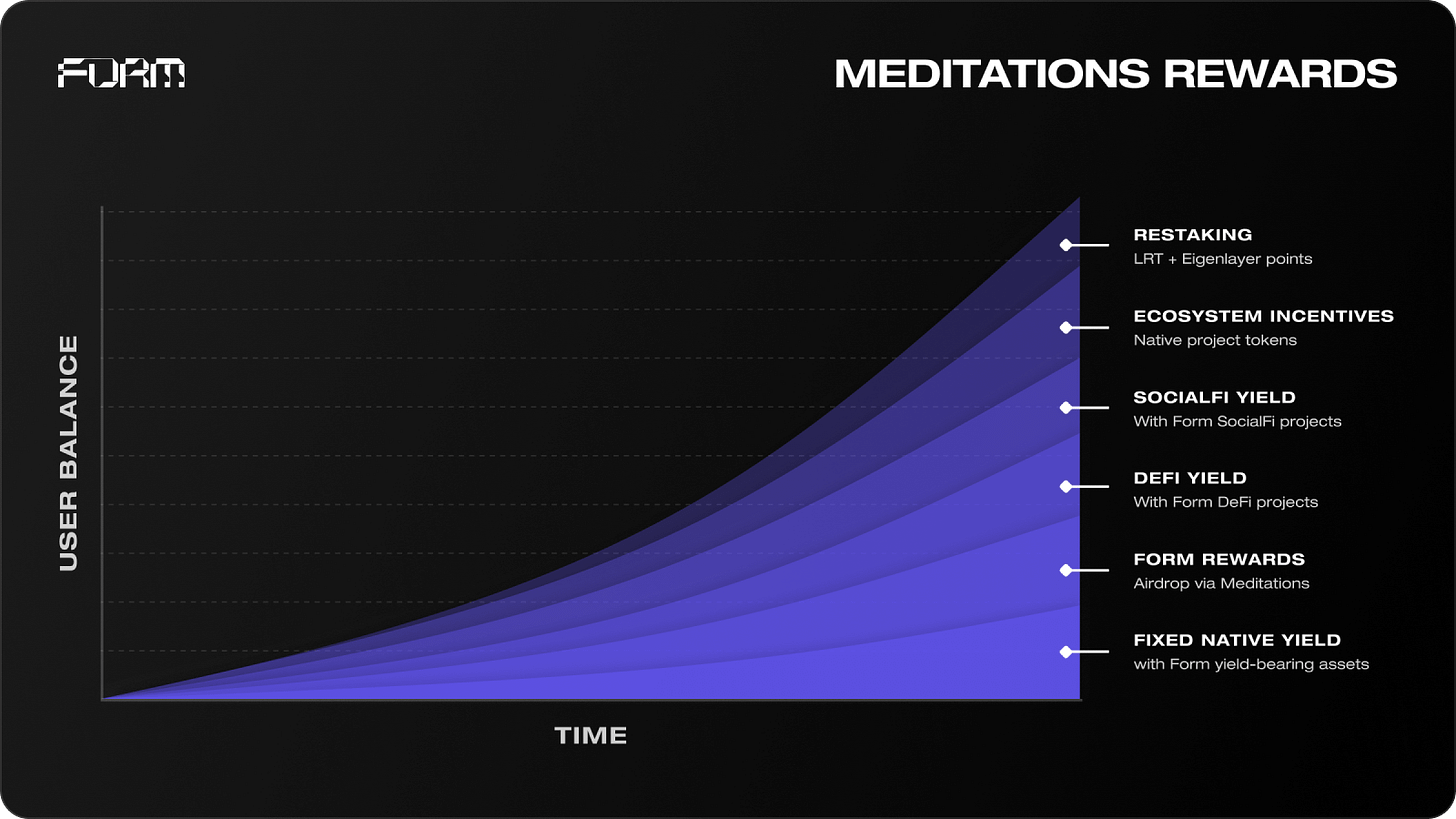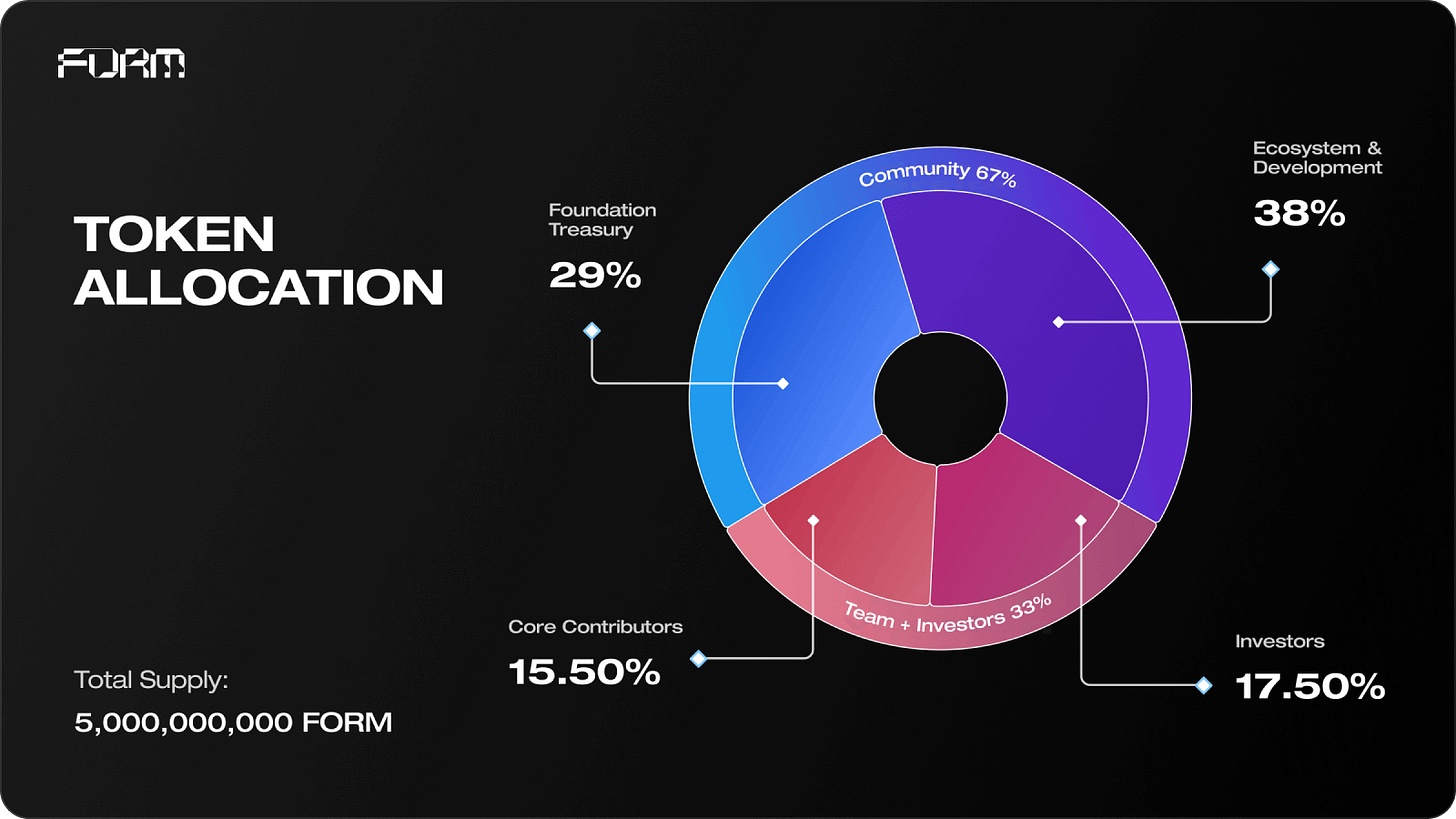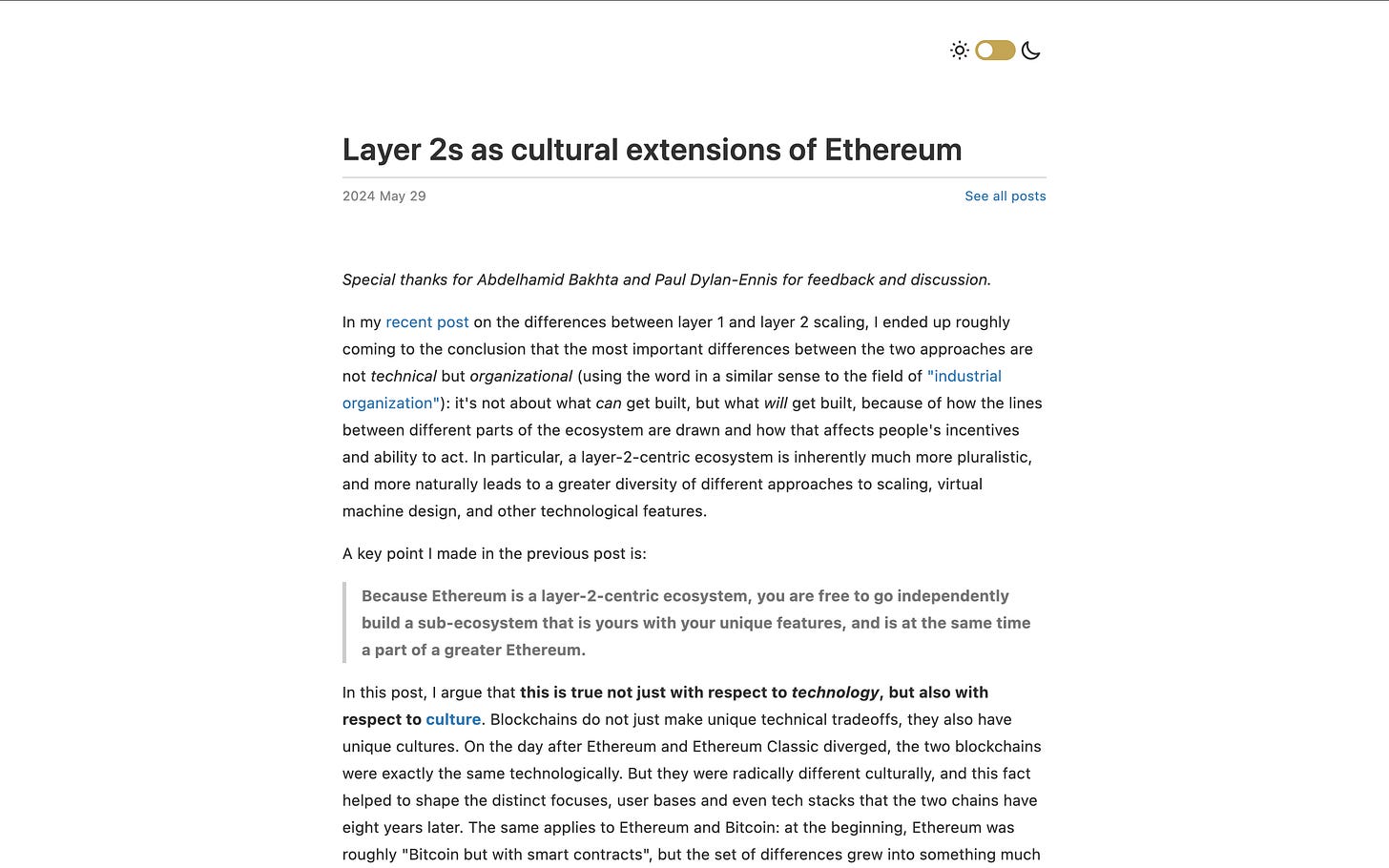【Form】L2 Chain built with OP Stack and Celestia and specialized for SocialFi / 50 million people will be attracted to SocialFi by 2030 / @0xForm
We thought about the future of L2 and the chain trend.
Good morning.
Mitsui from web3 researcher.
Today I researched Form (Form Network).
🟣What is Form?
💧FETH with points program and native yields
💬Consider Layer 2 as a cultural extension of Ethereum
🟣What is Form?
Form is an Ethereum L2 chain focused on SocialFi, utilizing the OP Stack and leveraging Celestia for the DA layer to achieve high throughput and low rates. Built with the vision of bringing 50 million people to SocialFi by 2030.
◼️ Founding Background
The background behind the establishment is the "lack of interoperability in SocialFi".
Friend[.].The SocialFi boom was driven by tech, but even though many SocialFi projects have emerged since then, the tokens have been closed to each platform and lacked interoperability.Creators put out tokens for each platform, and the cycle of soaring prices and then the bubble popping repeats itself.
Form" argues that each creator should issue tokens in the form of ERC-20 tokens, which should not be confined to a platform but used across ecosystems.They should also be interoperable and liquid assets connected to DeFi.
To achieve this, we built "Form" as an infrastructure chain.
Form" is positioning itself as a SocialFi city, and we see potential in chains that specialize in specific areas, like Ronin in games and Chiliz in fun tokens.
◼️ transition
Form" was launched in April 2024 by Roll Labs, founded in 2019 Roll Labs operates a protocol that allows creators to issue social tokens called Roll Roll has issued over 500 tokens so far since its inception,Roll has issued more than 500 tokens and recorded transactions totaling more than $1.5 billion since its inception.
Funding has been raised three times in the past, and prominent investors have invested in the company.
Roll Labs commented on the Form announcement as follows
We have seen everything from social tokens -> socialfi -> to socialfi L2.
Form is SocialFi L2 supported by Roll!
While we appreciate the recent innovation with "coupling curve tokens", something important is missing.That is interoperability.
When Roll built its social token standard, it adopted the ERC20 standard and built it on the Ethereum lego.This allowed the tokens to trade independently of the Roll DApp itself.
But not today. The vision of returning to interoperable digital assets for the community is important to our field.
Layer 2 blockchain also helps reduce prohibitive costs and variability on the main net.The design space suddenly becomes much larger.We will see a Cambrian explosion of new on-chain social primitives.
What an exciting future!
💧FETH with point program and native yields
Form launched its loyalty program, Meditations, in October 2024.This is a deposit campaign prior to the network launch.Points will be distributed based on funds deposited, and eventually tokens will be airdropped.
Called Form Season Zero, at least 8% of the FORM token supply will be distributed to users.
One feature is the ability to deposit any asset.The following is a list of more than 50 tokens that can be deposited, not only ETH, but also LRT, LST, and even BTC.Among others, we have also partnered with Renzo and Pendle, where you can deposit, for example, Renzo's ezETH to increase your point earning multiplier extra.
The company claims that since LSTs and LRTs can also be deposited, a six-fold yield will be earned after Formainet.
Here at the bottom level it says "FIXED NATIVE YIELD" Form issues ETH "FETH" which has a native yield.This can be earned by depositing ETH or ETH-equivalent LST or LRT, just like Blast, and the yield will be returned natively.
The allocation of FORM tokens is as follows.
💬Consider Layer 2 as a cultural extension of Ethereum.
Finally, a consideration.
I find "Form" very interesting.Personally, I thought SocialFi was interesting, but somewhat regrettable because it never got past the too-bubble element and remains branded as such.
Indeed, if you think about it, there have been Friend[...].tech, many of the protocols for tokenizing and trading individual people were tokenized and traded only within closed platforms.This seems to have led to the creation and disappearance of one platform after another.
If this can guarantee liquidity and interoperability, we may see a completely different social activity as individuals issue tokens in a more rough form, and common tokens can be made by all SocialFi, DeFi, NFT, and DAOs.That is something to look forward to.
Now, to change the subject a bit, "Form" is described as being what is called a "Thesis Chain.This is a term that indicates that it is "SocialFi-specific" as mentioned above.This paper, and where the basis for it comes from, is a blog published by Vitalik in May 2024.
This blog, titled "Layer 2 as a cultural extension of ethereum," summarizes the followingIt argues that.
Layer 2 of ethereum is important not only for its technical differences, but also for its organizational and cultural differences.
A layer 2-centric ecosystem naturally creates a more diverse approach.
The culture of the blockchain influences many aspects, including protocol changes, attracting developers and researchers, and attracting users.
There are three main subcultures in Ethereum: cypherpunks, regen (regenerativeists), and degen (speculators).
Layer 2 provides the ultimate venue for these subcultures to take action.
Each Layer 2 has its own "soul" that combines the culture of etherealism with its own unique characteristics.
This approach attempts to strike a balance between pluralism and cooperation.
The Layer 2-centric approach has its challenges: echo chambering, convergence to a single culture, and misdirected competition.
To address these challenges, it is important to create incentives for cooperation across the ecosystem.
Ethereum needs to continue to develop these ideas in order to maximize its unique advantages as a pluralistic ecosystem.
This includes personal interpretation, but the bottom line is that L2 is not only technically different, but also culturally different, and I argue that this approach is an important factor in the development of L2 and, by extension, Ethereum.
In this blog, he comments that "Layer 2 is (i) an ecosystem and (ii) organized around building something," suggesting that a central soul of culture is essential at the heart of L2.
Not only "Form," but also the number of domain-specific chains has been increasing recently, and I personally believe that this trend is a welcome one and will accelerate in the future.
To begin with, I believe that blockchain technology will realize the aggregation of small economic spheres, which will allow users who had no choice but to participate in mega-platforms (mass) to live in an economic sphere with their own preferred values.
Therefore, rather than general-purpose chains, I think the final destination will be the emergence of domain-specific and culture-specific chains (ecosystems), and the interoperability of these chains behind the scenes.If all of them are accessed from the user's wallet, the user will have the right to choose, and the world will become a place where all assets are managed by the user himself.
And this trend will definitely accelerate.
The reason is the widespread use of L2 development kits and the resolution of interoperability issues.Until now, the hurdle to create a domain-specific chain was quite high.The only way was to build it by full scratch or by utilizing Cosmos SDK or something like that.
In that case, L1 would have to collect validators and bear the cost of operating the chain in perpetuity, while L2 construction kits, such as OP Stack, have been available for some time, but these were also chains that could only be built and were not interoperable.
With Optimism Superchain and Polygon AggLayer, it is now possible to easily build L2 chains that can also guarantee interoperability.I consider Optimism Superchain and others to be OEMs in chain management that can outsource essential tasks such as technical development, ecosystem management and fostering, attracting developers, and achieving interoperability in chain management.
This system has drastically reduced the running costs of chain operations and has made it possible to create domain-specific chains that can be profitable and continue to operate even if they are not as large as general-purpose chains.Although it is still difficult to operate a chain, it should be a lot easier than it used to be.
In this sense, I believe that the trend of chains will change a bit in the future.Rather than evaluating chains based on the number of users and TVL as in the past, I think we will enter an era in which chains will be evaluated based on more realistic active rates and profitability.
This is what I thought about in my research.
This was the research for the Form!
🔗Reference/image credit: HP / DOC / X
Disclaimer:I carefully examine and write the information that I research, but since it is personally operated and there are many parts with English sources, there may be some paraphrasing or incorrect information. Please understand. Also, there may be introductions of Dapps, NFTs, and tokens in the articles, but there is absolutely no solicitation purpose. Please purchase and use them at your own risk.
About us
🇯🇵🇺🇸🇰🇷🇨🇳🇪🇸 The English version of the web3 newsletter, which is available in 5 languages. Based on the concept of ``Learn more about web3 in 5 minutes a day,'' we deliver research articles five times a week, including explanations of popular web3 trends, project explanations, and introductions to the latest news.
Author
mitsui
A web3 researcher. Operating the newsletter "web3 Research" delivered in five languages around the world.
Contact
The author is a web3 researcher based in Japan. If you have a project that is interested in expanding to Japan, please contact the following:
Telegram:@mitsui0x
*Please note that this newsletter translates articles that are originally in Japanese. There may be translation mistakes such as mistranslations or paraphrasing, so please understand in advance.


